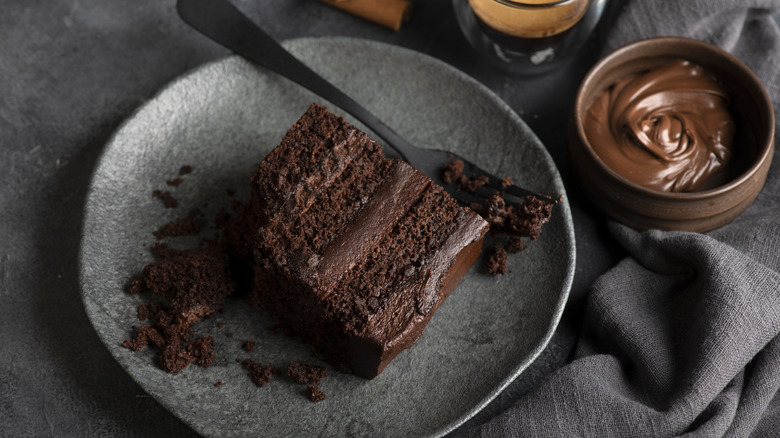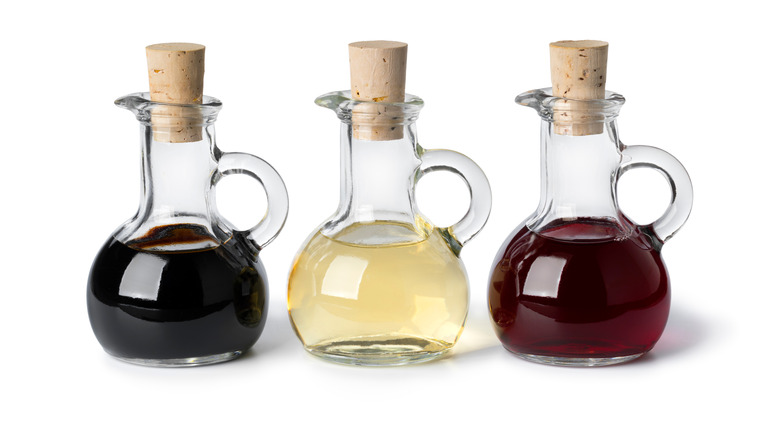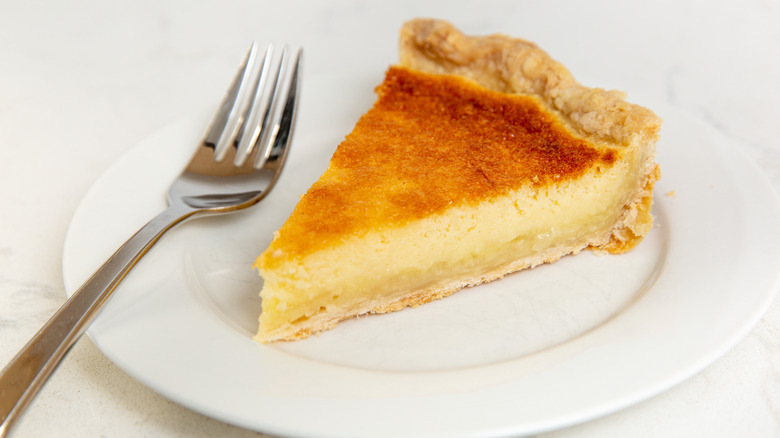The Unexpected Condiment That Adds Color And Flavor To Chocolate Cake
Milk, eggs, sugar, flour, cocoa powder ... and vinegar? That last ingredient might not sound like it belongs in a chocolate cake recipe. But check your grandmother's recipe book, and you might be proven wrong. There's a reason some chocolate cakes have vinegar in their ingredient lists. Just a tablespoon in the batter can transform a dense, heavy dessert into something lighter, fluffier, and even more delectable.
Vinegar not only affects the texture of a cake, but its color and flavor as well. Though at first this might sound unappetizing, as vinegar has such a harsh flavor, it works well in concert with the cake's other ingredients to form a harmonious finished product.
The acidity in the vinegar turns the finished chocolate dessert a deeper, more vibrant brown color. It also brings out a tang in the flavor of the cake that pairs well with the richness of the chocolate.
The unusual pairing came about in wartime
As delicious as this pairing is in practice, vinegar and chocolate doesn't seem like an intuitive combination. So, who was the first person to put a capful of vinegar in their cake batter?
The answer dates back to World War II, when eggs and dairy were rationed, and ingredients were hard to come by. This style of cake is also known as "Depression Cake" for this reason. Vinegar became a substitute for eggs; when combined with baking soda, the two ingredients interact in a way that binds and sets the batter, much like eggs would. They also give finished cakes a light, airy texture.
Chocolate cake isn't the only baked good that features this combination, either. Vanilla, lemon, cinnamon, and other flavors work just as well. And not even the frosting has dairy in it; it's just a combination of powdered sugar, flavoring, and water. These cakes are delicious and low-cost, with readily available ingredients even in times of financial depression or war.
Vinegar's many sweet uses
Cake batter isn't the only sweet application for vinegar. Despite its stereotypical uses in savory applications such as salad dressings and barbecue sauce recipes, or in dishes such as chicken adobo, this condiment has a history of showing up in baking recipes.
Vinegar pie is another dessert starring that same pungent ingredient. Popular in the south (and also known as "buttermilk pie" or "chess pie"), this treats was also a Depression-era favorites for the same reasons. It's cheap, easy to make, and big on flavor. Many people enjoy it for its tangy bite, even today.
Vinegar can also be used to finish caramel; the acidity helps keep the sugar from crystallizing and causing sauce or candies to become grainy. White or apple cider vinegar will work, but some even go as far as to use balsamic for an extra depth of flavor. Read the recipes closely, and you may be surprised at the ingredients in your favorite dishes — they're not always as straightforward as you think.


